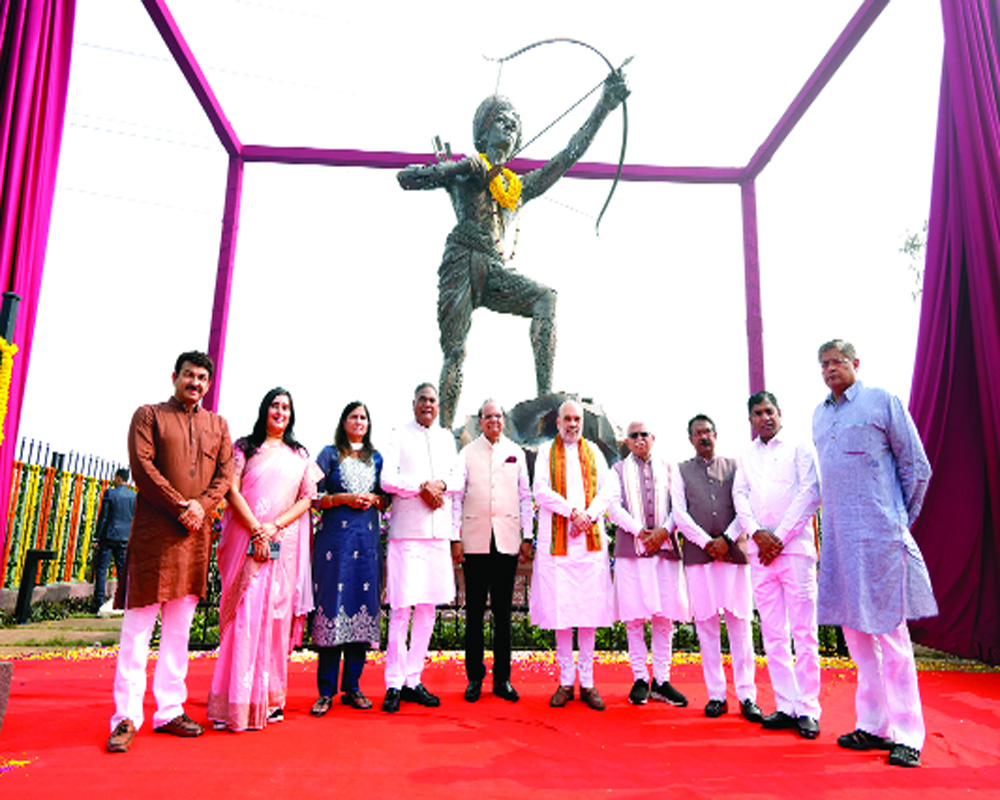Mediaeval era origin Sarai Kale Khan Chowk dating back to the 16-17 Century will now be called Birsa Munda chowk in a tribute to the tribal icon and freedom fighter. The renaming, on the occasion of his 150th birth anniversary, was announced on Friday by Union Minister of Housing and Urban Affairs Manohar Lal. November 15 was declared ‘Janjatiya Gaurav Divas’ by the Central government in 2021.
Sarai Kale Khan is one of the busiest areas of Delhi, particularly due to the Inter-State Bus Terminal (ISBT) from where buses ferry travellers to destinations across north India. In the past, it was known as Moocho Waali Sarai (Inn of Moustaches) because every man had long moustaches, which was a symbol of masculinity in those days.
The renaming of the historic area, comes ahead of the Delhi Assembly polls, and was announced by the minister on the occasion of the unveiling of a statue of Birsa Munda by Union Home Minister Amit Shah and Delhi Lieutenant Governor Vinai Kumar Saxena at the Baansera Bamboo Park near Sarai Kale Khan inter-state bus terminus (ISBT) in south-east Delhi. President Droupadi Murmu, Prime Minister Narendra Modi and several leaders also paid tributes to the great leader.
Birsa Munda spearheaded a tribal movement that started in the Bengal Presidency (now Jharkhand) in the late 19th century, making him an important figure in the history of the country’s independence movement.
Born in 1875 in present-day Jharkhand, Munda had challenged British rule and is credited with mobilising tribals against the empire. He died in British custody at a young age of 25 years. Munda, the hero of the Indian tribal freedom struggle, played a pivotal role in inspiring the tribal community of the Chotanagpur region to fight for their independence. He led the armed revolution known as “Ulgulan” (the rebellion) against British rule.
He belonged to the Munda tribe in the Chhotanagpur Plateau area. He spearheaded an Indian tribal mass movement that arose in the Bihar and Jharkhand belt in the early 19th Century, to protest British colonisation.
Munda rallied the tribals to fight against the forceful land grabbing carried out by the British government, which would turn the tribals into bonded labourers, and force them to abject poverty. He influenced his people to realise the importance of owning their land and asserting their rights over it.
He founded the faith of Birsait, a blend of animism and indigenous beliefs, which emphasised the worship of a single god. He became their leader and was given the nickname, ‘Dharti Aba’ or the father of the earth. He died on June 9, 1900, at age 25.
Addressing the gathering at the event, Khattar said “Bhagwan Birsa Munda is a very big name for the country’s tribal community as he waged a huge struggle against the British for snatching away their natural resources. To preserve the memory of such an inspiring personality, especially for the youth, a statue of Bhagwan Birsa Munda was unveiled by Union Home Minister Amit Shah and the ISBT Chowk has been named after him.”
Sarai Kale Khan is a historic locality and a Gujjar village of Basista / Bosatta Gotra (clan), migrated from Khanpur village situated in South Delhi in 16th-17th Century. In the North-west corner of the village there used to be some remains of old monuments which were called ‘Mahal’ (Mansion), nowadays the area has DDA Flats. The land area of Sarai Kale Khan once stretched from Purana Qila (Old Fort) in the North-west to JawaharLal Nehru Stadium in the West, Mayur Vihar in the East and Taimoor Nagar in the South.
According to Volume III of ‘Monuments of Delhi: Lasting Splendour of the Great Mughals and Others’, compiled by Maulvi Zafar Hasan and first published in 1920, “The sarai of Kale Khan which was constructed of rubble masonry was originally surrounded by arched cells, with their outer walls crowned by battlements”.
The sarai seemed to be one of those which are known to have been built by Sher Shah at the distance of a “Kiroh (nearly 3 km) on the road from Bengal to the Indus”, it said. “In each of these sarais, travellers, Muhammadans as well as Hindus, were entertained, at the public expense, by the order of the Emperor, and horse posts were established there for quick communication, so that news from Bengal reached him daily,” the book mentioned.

























